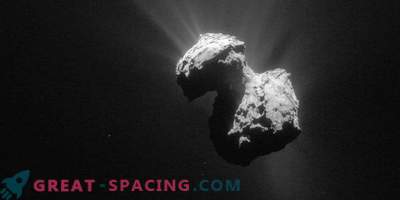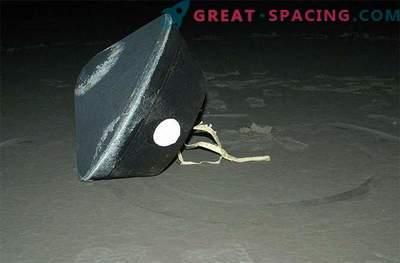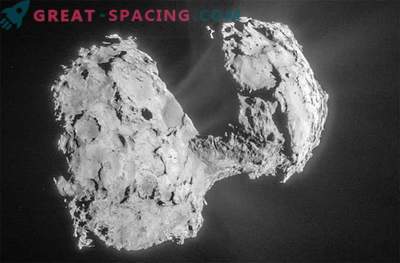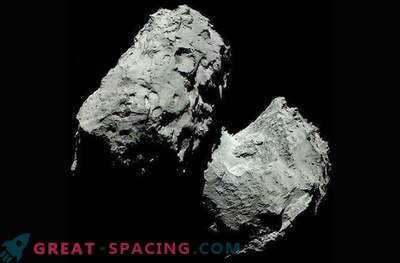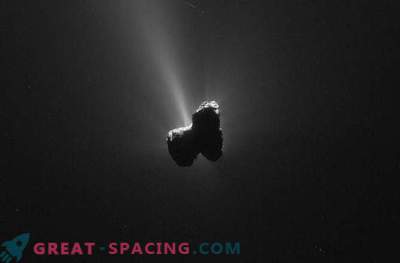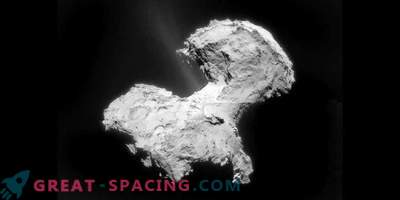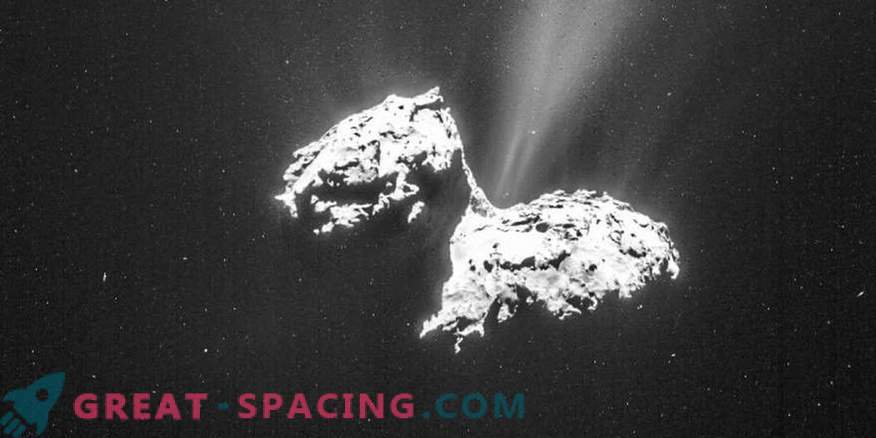
Recent studies that analyzed data from Rosetta’s missions study the formation of a strange comet shape and carefully check various long-term changes in its structure (for example, a rock fall).
At the beginning of the mission of the Rosetta space probe, which the European Space Agency began to send for checking the comet 67P / Churyumov-Gerasimenko (in Jupiter), the researchers were intrigued by the form. Its two-petal structure made some people joke that a rubber duck was floating in space.
Since then, many scientists have tried to understand how such a strange shape was formed. A new study offers two possibilities: a comet originated from two parts that merged together, or it was cut from one body. Whatever the event, it should have happened at an early stage of the formation of the solar system.
“We have evidence that both causes (collision or carving) occurred in the early solar system. But today, of course, the number of small bodies is so insignificant and diluted that we do not observe noticeable collisions, ”said Jonathan Lunin, professor of physical sciences at Cornell University.
The study was headed by Olivier Musis, a professor of astrophysics and a member of the University Institute of France.
Musisa's study was published shortly before the appearance of new results showing changes in 67P, when the comet approached the Sun. A report published in Nature Astronomy showed that soon after the emission of dust and gas a piece of rock came off the comet.
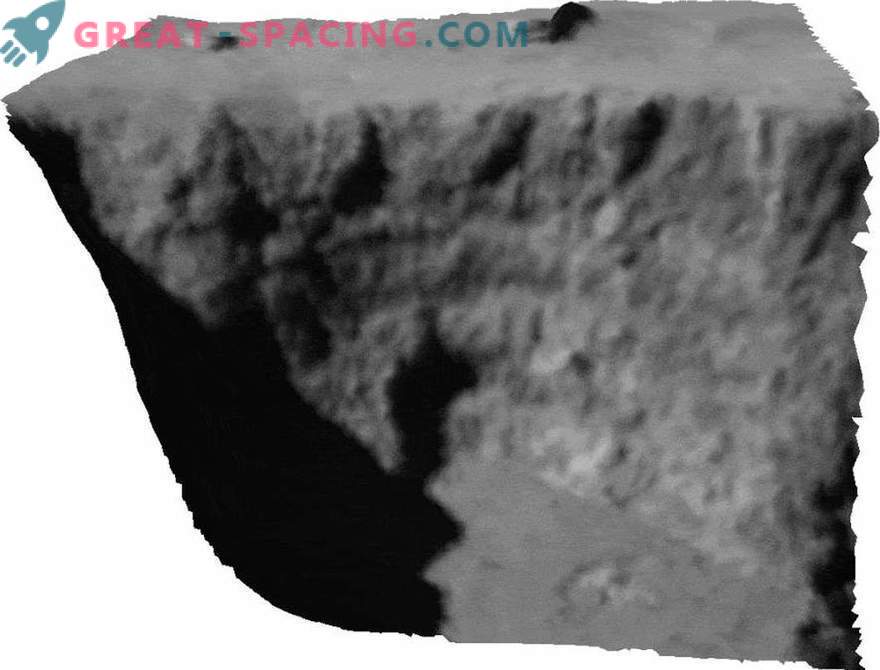
Three-dimensional view of the Aswan rock before and after separation. Initially it was thought that there was a crack in the cliff with a length of 70 m and a width of 1 m. It separated the overhanging block 12 m from the main plateau. “The pictures of Rosetta have already shown that the collapse of the rock is important for the formation of cometary surfaces. But this particular event added a missing “before and after” connection between the separation, the debris observed at the foot of the cliff, and the dust plume. This is a general mechanism in which comet explosions can be triggered by the collapse of the material, ”said Matt Taylor, a scientist at the ESA Rosette project.
It is believed that the collapse is caused by long-term thermal changes of the comet, and not by a sharp temperature transformation, since the event occurred at night. In additions to the publication there are various long-term changes in the structure of the comet. For example, the appearance and disappearance of ripples, as well as rocks.
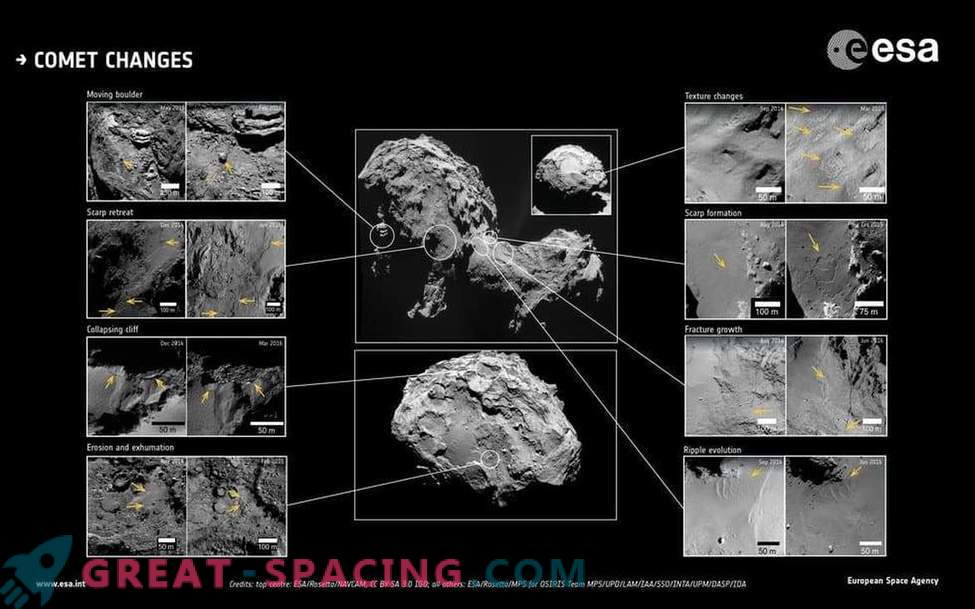
Various types of changes found in high-resolution images of comet 67P / Churyumov-Gerasimenko. They were tracked for more than two years using the Rosette spacecraft from ESA.
“The constant monitoring of the comet during its passage through the inner solar system allowed us not only to study how comets change when approaching the Sun, but also how quickly these changes occur,” said Rami El-Maarri, who is in charge of the second study.
Lunin and Musis have long been exploring the solar nebula. This is the primary gas and dusty environment present in the early solar system, when our star was still growing. To understand how the comet 67 / P was formed, the authors tried to study its composition, and then transfer the formation of elements to the conditions of the early solar system.
They focused on the isotopes of aluminum-26 and iron-60, noting that the smaller the object, the easier it is to get rid of the heat. They tried to model the body, which still retained its volatile matter in a fairly thick layer near the surface. The authors found that accretion would have occurred earlier than the formation of one large body, which was then cut out by a collision. This is due to the fact that a larger body forms more slowly and will contain more radioisotopes per unit surface area.
The document does not indicate which scenario is more likely, but Lunin is a bit biased in this matter. The data show that two smaller objects could have formed within a million years after the formation of the solar system. For the variant with a larger parent body, it will take from 4, 5 to 7 million years.
He cited as an example the work of Julia Castillo-Roger, a scientist at NASA's Jet Propulsion Laboratory, who was studying the formation of Yapet, the satellite of Saturn. Based on studies of radionuclides, it assumes that it was formed 3-5 million years after the appearance of the first solid bodies in the solar system.
“If these moons were formed in the Saturn system in such a period, then it’s hard to believe that the comet will need 6-7 million years,” said Lunin.
Another reason is that after some time the gas will dissipate in the solar nebula, so it is difficult to justify such a long waiting period.
Lunin may investigate more, but now he is working on the “New Frontiers” mission to send a probe to Enceladus. This is the ice moon of Saturn, known for its erupting geysers. It is believed that it is possible to find microbial life.




